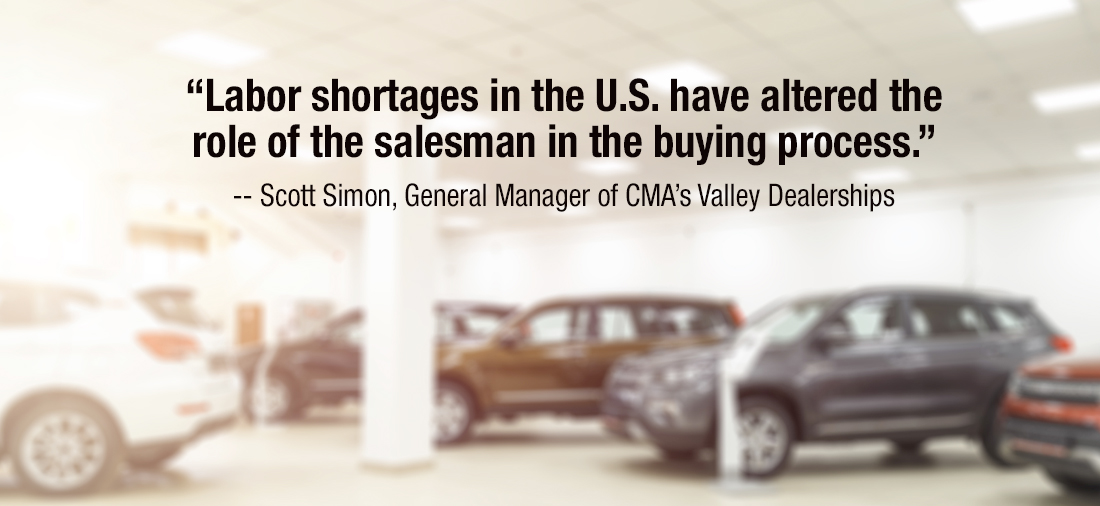The Auto Industry Is In Convulsive Change…
Virginia’s WHSV TV is reporting that significant labor and supply shortages continue wallop the auto industry as a whole, and your local car dealership is really feeling the punch.
No doubt, the game is changing for auto sales organizations. The effects of increasing COVID cases in China, the war in Ukraine, and labor shortages in the U.S. have altered the role of the salesman in the buying process. Scott Simons, General Manager of CMA’s Valley Dealerships, said instead of test driving a car on the lot and signing the papers all in one day, buyers often place the car online and get the car delivered.
“We have roughly 225 vehicles that are presold. You may drive by a dealership and say, ‘they don’t have many cars there.’ Well, if a truck comes in and people are waiting for it to come in, that truck may deliver in the morning and that car’s gone in the afternoon,” Simons said.
“We still feel like there’s going to be some inventory issues because there’s not only a chip shortage, it’s a labor shortage, it’s a COVID-in-China shortage, so all these parts are made in all these different countries, not just here in the United States,” Simon said.
Buying What’s Available or Waiting To Have A Vehicle Built
That means consumers need to go about buying cars differently. Start shopping early, so a dealer can get you in the car you want. “If any consumer is considering purchasing a vehicle, I would contact your local dealer as soon as possible because that timetable could be longer than what you’re used to,” Simon said.
Covid and The Car Buying Experience
“In the past, before COVID, most of the transactions happened here. Now, they’re contacting us through the internet, we’re going out and doing video walk-arounds of what they’re purchasing, we’re sharing videos we have in archive, and they’re purchasing it without ever coming to the dealership. We had to pivot, but car dealers are resilient, and we’ll figure out how to take care of our customers,” Simon said.
Keeping the old car running…
The vehicle repair and aftermarket industries are also affected by parts and labor shortages, shipping delays, increased wait times and rising repair costs.
Among car owners who were either priced out of buying a car or couldn’t find the right vehicle due to the inventory shortage, many chose to hold onto their current vehicle. Industry consultancy IHS Markit reports that the average age of vehicles on the road reached a record high of 12 years, partially due to the effects of the pandemic and adjustments to driving behavior. This sparked a rise in demand for repair and maintenance services to keep current vehicles on the road.
“Repair facilities — whether dealerships or independently owned — have struggled in acquiring parts,” David Bennett, repair systems manager at AAA, wrote in an email to Cars.com. “Due to the shortage of new and used vehicles, many consumers are opting to keep their vehicles longer, and as a result, repair facilities are seeing an increase in business.”
Car owners are also willing to spend more on those repairs to keep their current vehicle running. That’s according to Michael Chung, market intelligence director at Auto Care Association. “When people are taking their vehicle in for service, the threshold for saying, ‘OK, this [repair] is too expensive, I’m going to switch cars’ is going up from the $1,500-$3,000 range to $5,000-$10,000 because used cars are priced so much higher,” said Chung in an interview with Cars.com.







![[Presentation] Livestream of TMC’s Press Conference](https://www.miamicars.com/wp-content/uploads/2023/02/tmb_corporate-218x150.png)









